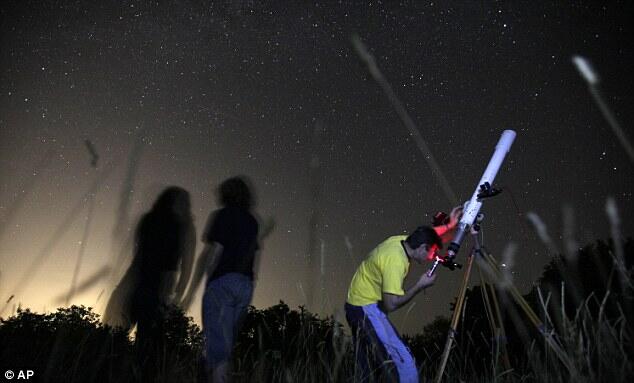Northern hemisphere sky-gazers are in for a special treat tonight with a rare shooting star “outburst”, which astronomers hope will not be marred by clouds and a bright Moon.
For about an hour, there will be more than double the usual fireball activity associated with the annual Perseid meteor shower.
The night sky tonight offers a delightful opportunity for stargazers to watch the ongoing annual Perseid meteor shower, which is at its peak now according to astronomers.
With some luck, Dubai and the UAE’s skywatchers will be able to spot a bevy of meteors in the clear night skies today and over the weekend.
Experts believe that the best meteor watching hours will be between 12am and 3am.
“There will be 200 or maybe as many as 300 (shooting stars) per hour,” observed from a very dark site, astronomer Mark Bailey of the Armagh Observatory in Northern Ireland told AFP.
“This outburst, as we call it… doesn’t last that long. It might last an hour or a couple of hours,” he said.
Perseids are also known for their fireballs. Fireballs are larger explosions of light and colour that can persist longer than an average meteor streak. This is due to the fact that fireballs originate from larger particles of cometary material.
Normally, the Perseids regale Earthlings with a show of about 100-120 shooting stars per hour.
This year, Earth is on a collision course with three of the most heavily populated of these trails – created in the years 1862, 1737 and 1479.
Viewing tips
Find an area well away from bright lights. Take a mat or sleeping bag or a lawn chair, as well as a blanket to keep you cosy. It is summers, but the night can get windy and if you’re in the open, it may get a little chilly too.
Lie flat on your back with your feet facing northeast and look up, taking in as much of the sky as possible.
Don’t lose hope if you don’t see anything immediately – the human eye takes time to adjust, and after about 30 minutes in the dark, your eyes will adapt and you should begin to see meteors.
‘Kamikaze run’
“The meteors you’ll see this year are from comet flybys that occurred hundreds if not thousands of years ago,” NASA meteoroid expert Bill Cooke said in a statement.
“And they’ve travelled billions of miles before their kamikaze run into Earth’s atmosphere.”
However, there is no risk to our planet.
In fact, astronomers’ main concern is the weather, with cloud cover predicted for parts of Europe.
There is also the dimming impact of our own satellite – the Moon – which will be in a bright phase, making it harder to observe the sharp but short-lived bursts of meteors exploding.
“It is unfortunate that it is in a waxing phase,” said Bailey. “So we should really be observing after moonset” – some 30 minutes into the outburst.
He advised people to get as far away from clouds and electric light as possible in order to enjoy the show.
No telescope or special equipment is needed.
The next mega-outburst of the Perseids is predicted to occur on August 12, 2028, and will feature the dust trail produced by the comet during its 1479 perihelion passage.
The yearly show got its name because the stars appear to fly out of the constellation Perseus, visible in the Northern Hemisphere.
Source: Emirates 247











